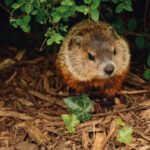Senegal, a nation rich in culture and history, is positioned as the westernmost country in Africa. Located on the Atlantic coast, Senegal occupies a strategic geographical point, acting as a bridge between Africa, Europe, and the Americas due to its advantageous location on major sea and air routes.
Geographically, Senegal is situated in West Africa and covers an area of approximately 196,722 square kilometers. It shares borders with Mauritania to the north, Mali to the east, and Guinea and Guinea-Bissau to the south. To its west, Senegal boasts a 550-kilometer coastline along the Atlantic Ocean, playing a significant role in its climate and economy.
Delving Deeper into Senegal’s Location and Landscape
The capital city of Senegal, Dakar, is uniquely situated on a peninsula, Cap-Vert Peninsula, which marks the westernmost tip of the African continent. Dakar, with an area of 550 square kilometers, is a bustling urban center and a crucial port city.
Senegal’s terrain is generally flat, characterized by sandy plains. The majority of the country lies at a low altitude, less than 130 meters above sea level, with the exception of the southeastern region near the border with Guinea, where some higher elevations can be found.
Water resources are vital to Senegal’s geography. Three major rivers traverse the country from east to west:
- The Senegal River: Extending 1,700 kilometers in the north, forming a natural border with Mauritania and playing a crucial role in irrigation and agriculture.
- The Gambia River: Flowing for 750 kilometers, this river effectively bisects the country and is a significant feature of Senegal’s landscape.
- The Casamance River: Located in the south, this 300-kilometer river influences the climate and vegetation of the Casamance region, known for its lush greenery.
Climate, Vegetation, and Population Distribution
Senegal experiences a dry tropical climate, defined by two distinct seasons. A dry season extends from November to June, characterized by minimal rainfall and sunny conditions. Conversely, a rainy season occurs from July to October, bringing essential precipitation to the region.
The vegetation across Senegal varies according to latitude and rainfall patterns. The southern part of the country is marked by forests, transitioning to savanna in the central regions, and finally to steppe vegetation in the drier north. This diverse vegetation reflects the varying climatic zones within Senegal.
In terms of population, as estimated in 2009, Senegal was home to approximately 12,171,265 people, with a population density of 61.9 inhabitants per square kilometer. The population was fairly evenly split between genders, with approximately 6,150,750 females and 6,020,515 males.
Senegal’s Political and Economic Landscape
Senegal gained independence from France on April 4, 1960, marking a pivotal moment in its history. Léopold Sédar Senghor became the first president, leading the nation from 1960 to 1981. He was succeeded by Abdou Diouf, who remained in power until the 2000 elections, which brought Abdoulaye Wade to the presidency.
The Republic of Senegal operates as a secular, social, and constitutional democracy. It upholds the principle of equality for all citizens under the law, irrespective of origin, race, sex, or religion, and respects all belief systems. French is recognized as the official language, while national languages include Jola, Mandinka, Pular, Serer, Soninke, Wolof, and others that may be codified in the future.
Senegal follows a pluralist presidential regime where the President is elected by majority vote for a five-year term. The parliament consists of the National Assembly and the Senate, representing the legislative branch of the government.
Administratively, Senegal is divided into fourteen regions, each with its own capital. These regions include Dakar, Diourbel, Fatick, Kaffrine, Kédougou, Kaolack, Kolda, Louga, Matam, Saint Louis, Sedhiou, Tambacounda, Thies, and Ziguinchor.
Economically, Senegal’s key indicators in 2008 showed a GDP of 5,944 billion FCFA and a GDP per capita of 501,978 FCFA. The growth rate was 3.3%, with an inflation rate of 5.8%. The Human Development Index (HDI) in 2005 was 0.499, and literacy rates were at 41.8% in 2007, with a gross enrollment index of 86% in the same year. The currency of Senegal is the West African CFA franc (XOF), pegged to the euro at a fixed rate.
In conclusion, Senegal’s location in West Africa is not just a matter of geographical coordinates, but a defining factor shaping its climate, culture, and its role on the African continent and the world stage.

